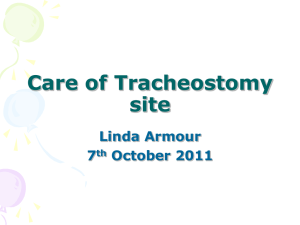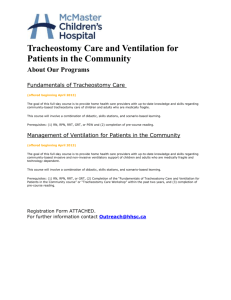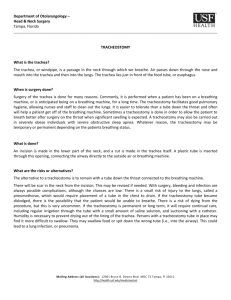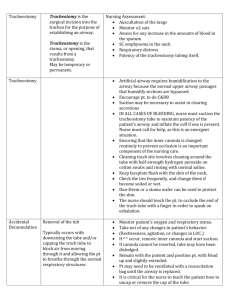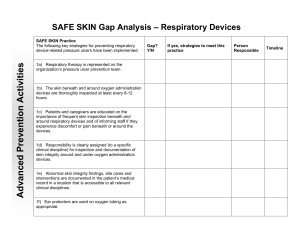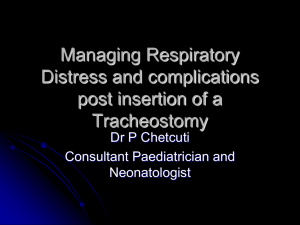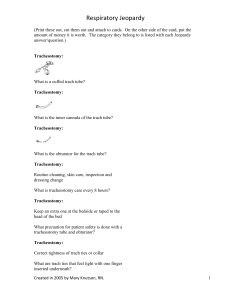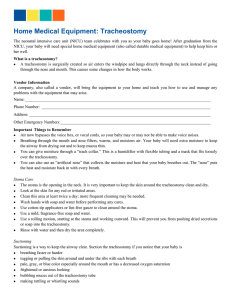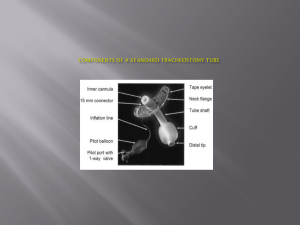Pediatric Trach Care
advertisement
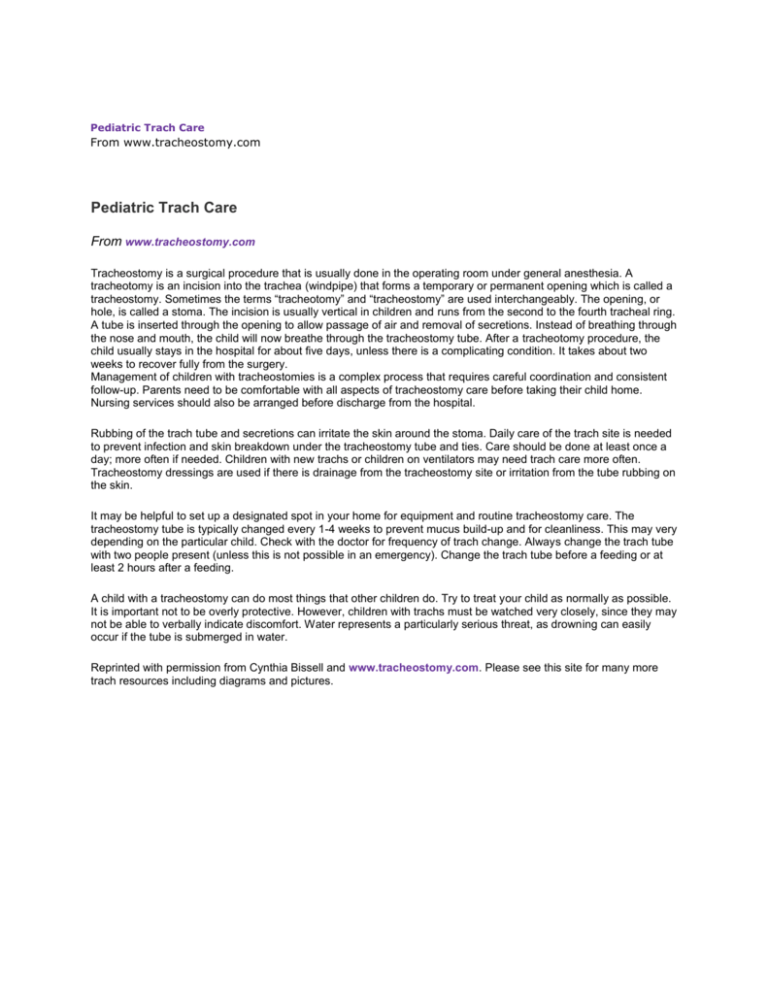
Pediatric Trach Care From www.tracheostomy.com Pediatric Trach Care From www.tracheostomy.com Tracheostomy is a surgical procedure that is usually done in the operating room under general anesthesia. A tracheotomy is an incision into the trachea (windpipe) that forms a temporary or permanent opening which is called a tracheostomy. Sometimes the terms “tracheotomy” and “tracheostomy” are used interchangeably. The opening, or hole, is called a stoma. The incision is usually vertical in children and runs from the second to the fourth tracheal ring. A tube is inserted through the opening to allow passage of air and removal of secretions. Instead of breathing through the nose and mouth, the child will now breathe through the tracheostomy tube. After a tracheotomy procedure, the child usually stays in the hospital for about five days, unless there is a complicating condition. It takes about two weeks to recover fully from the surgery. Management of children with tracheostomies is a complex process that requires careful coordination and consistent follow-up. Parents need to be comfortable with all aspects of tracheostomy care before taking their child home. Nursing services should also be arranged before discharge from the hospital. Rubbing of the trach tube and secretions can irritate the skin around the stoma. Daily care of the trach site is needed to prevent infection and skin breakdown under the tracheostomy tube and ties. Care should be done at least once a day; more often if needed. Children with new trachs or children on ventilators may need trach care more often. Tracheostomy dressings are used if there is drainage from the tracheostomy site or irritation from the tube rubbing on the skin. It may be helpful to set up a designated spot in your home for equipment and routine tracheostomy care. The tracheostomy tube is typically changed every 1-4 weeks to prevent mucus build-up and for cleanliness. This may very depending on the particular child. Check with the doctor for frequency of trach change. Always change the trach tube with two people present (unless this is not possible in an emergency). Change the trach tube before a feeding or at least 2 hours after a feeding. A child with a tracheostomy can do most things that other children do. Try to treat your child as normally as possible. It is important not to be overly protective. However, children with trachs must be watched very closely, since they may not be able to verbally indicate discomfort. Water represents a particularly serious threat, as drowning can easily occur if the tube is submerged in water. Reprinted with permission from Cynthia Bissell and www.tracheostomy.com. Please see this site for many more trach resources including diagrams and pictures.

